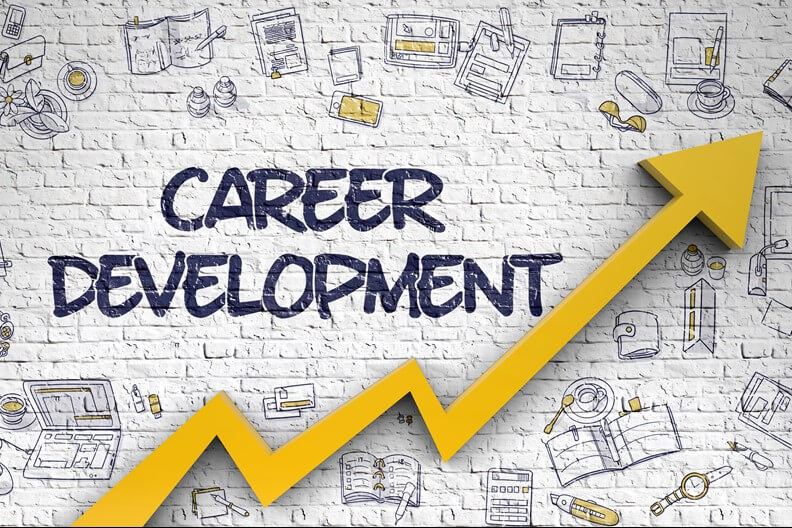Businesses and employees alike thrive on growth. Workers aren’t just looking for a paycheck. They want opportunities to learn, develop, and build meaningful careers. This desire for career growth directly translates to increased engagement, performance, and retention for companies that prioritize employee development. In fact, research shows that:
- 76% of employees are more likely to stay with a company that offers continuous learning and development programs. (1)
- 84% of organizations believe that creating a workplace culture that embraces learning bolsters organizational resilience and fosters a better work environment. (1)
These impressive statistics highlight a critical point: a training and development program must possess specific, essential features to truly succeed. Without them, businesses risk squandering valuable time, money, and resources. To transform potential into real results, a well-structured plan is crucial. It’s not enough to simply offer training; it must be the right training, delivered in the right way, and aligned with both the company’s goals and the employees’ aspirations.
With a solid strategic foundation in mind, let’s explore the key components that contribute to a truly effective career development program.
ALIGNING WITH BUSINESS GOALS
Strategically sound training and development programs focus on the core skills employees need to drive your company towards desired outcomes. After all, your people are the driving force behind long-term business success. By honing the necessary skills to perform at their greatest potential, you equip your employees to become your greatest asset.
Additionally, aligning these skills with business goals makes it clear that growth opportunities are directly relevant to employee roles. This alignment demonstrates to employees that leadership values them and is invested in their future with the organization.
MEETING EMPLOYEES’ WANTS AND NEEDS
While aligning with business goals is crucial, it’s equally important to consider what employees want and need from training. Without their buy-in, participation and engagement will suffer.
Start by surveying your workforce, either as a whole or by teams, to uncover their career development aspirations. What excites them? What are their individual goals? What kind of training do they find most beneficial?
Once you have a general understanding, encourage managers to have one-on-one conversations with each of their team members. This provides a valuable opportunity to gather individual feedback and reinforce that leadership cares about their growth and development. While it’s impossible to completely personalize the program for every employee, you can certainly tailor it to address common needs and interests.
DIVERSIFYING LEARNING APPROACHES
Not everyone learns the same way. That’s why it’s essential to offer a variety of approaches within your career development program. Some effective options include:
- One-on-one mentoring
- Workshops
- Leadership role-focused training
- Apprenticeships with colleagues
Providing a diverse mix of tactics allows employees to develop a broader skill set and caters to different learning styles, maximizing the impact of your program.
PROVIDING ROBUST TOOLS AND RESOURCES
No matter where employees are in their development journey, easy access to tools and resources is vital. This empowers them to take ownership of their growth and feel supported along the way.
One of the most valuable resources you have is your leadership team. From managers to C-suite executives, dedicating even 20-30 minutes of their time to connect with employees can make a significant difference. It shows that the organization values employees as individuals and reinforces their sense of belonging. The more valued and seen people feel, the more likely they are to stay with the company and perform at their best.
In addition to leadership support, leverage technology to enhance your program. A wide range of software programs cater to various training needs. Today, AI-powered tools offer even greater levels of guidance, feedback, and support, automating certain tasks and personalizing the learning experience.
MEASURING PROGRESS AND IMPROVEMENT
Before any training begins, assess participants’ current skills and knowledge. Skill and knowledge assessments provide a baseline, allowing you to accurately measure progress and improvement throughout the program.
Next, set clear, defined goals for each employee to achieve by the end of their training. These objectives give them a tangible target to work towards and provide a framework for evaluating success.
As employees complete their training, conduct follow-up assessments to measure how far they’ve come. This data is crucial for making ongoing improvements to your program and ensuring its long-term effectiveness. Without a clear understanding of what worked and what didn’t, it’s impossible to optimize your approach.
PRO TIP: Recognize and reward employees who actively participate in learning and development initiatives. This reinforces the value your company places on continuous growth and encourages a culture of lifelong learning. Consider offering certificates of completion, non-cash incentives, or public acknowledgment of their achievements.
KNOWLEDGE REALLY IS POWER
The adage “knowledge is power” holds true, especially when it comes to effective career development programs. By empowering employees with the knowledge and skills they need to advance their careers within your organization, you’re not only investing in their future but also significantly increasing your company’s chances of success.
Do you need help planning a corporate event, meeting, or conference? Connect with Gavel International to learn more about our professional meeting planning services.
_______________________
SOURCE(S):
1 https://www.shrm.org/content/dam/en/shrm/research/2022-Workplace-Learning-and-Development-Trends-Report.pdf
- What Real Workplace Flexibility Looks Like – and 8 Tips to Achieve It - September 22, 2025
- Is Your Company’s Career Development Plan Really Working? - August 18, 2025
- Best Places to Find a Food and Drink Oasis in Scottsdale, Arizona - July 28, 2025






